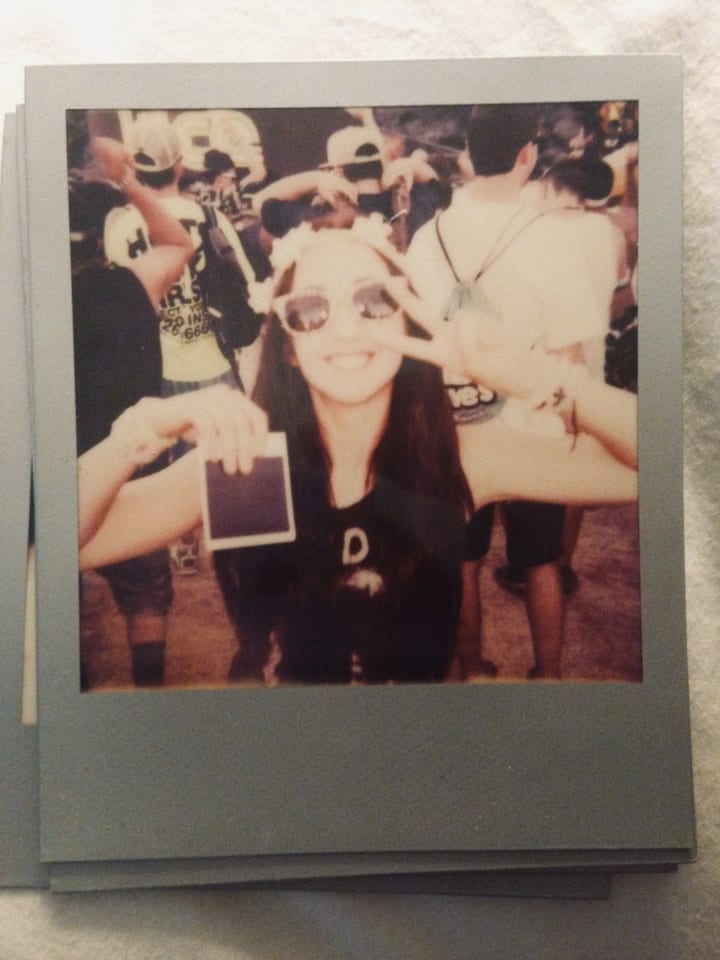The Science Behind MDMA and Electronic Dance Music
What’s Really Going On Here?

Eight years ago, my would-be husband and I were sitting at a bar in the outskirts of Las Vegas, Nevada. We were casually talking about EDM, electronic dance music, and an upcoming music festival we wanted to attend. Out of nowhere, the bartender cut into our conversation with,
“I really don’t like techno music.”
“Really? Do you like drugs?” I replied casually. Of course, he liked drugs. I knew the answer before he opened his mouth to say, “yeah” with a shrug.
“Did you know that DJs will program their music specifically to help you trip harder? They’ll build you up and take you on a ride with their set. The music is literally programmed for your drugs.” This had the bartender thinking back to his “I hate techno music” situation.
“Have you ever listened to techno while you were on MDMA?” I pressed the answer was no. The conversation was won as far as I knew.
This conversation was based solely on a hunch I had. I was overly confident in what I was saying without any real information to back it up. I will admit to hearing, and believing, that some EDM could increase or control the way you were feeling on MDMA. Or, other drugs, but for time purposes we will stick to MDMA. Now, I want to know if this conversation held any merit. Do producers create their music to heighten a person’s experience on MDMA. Does it have any effect?
So, before we dive into things more. What exactly is MDMA? Methylenedioxymethamphetamine, or MDMA, is a synthetic drug that acts as a stimulant and hallucinogen. It produces an energizing effect, distortions in time and perception, and enhanced enjoyment from sensory experiences. It has also been described as an entactogen—a drug that can increase self-awareness and empathy. (drugabuse.gov, 2017) MDMA is also often referred to as ecstasy, but they are not always the same thing. So basically, in less scientific words, this drug sets your world on fire. In a good way. It turns your psychological dial all the way up to ten. Most of the time your heightened senses send you on a pretty great journey if you are in the right circumstances. You should be in a stress-free environment, with the right people, and most definitely listening to the right music. What is the right music and how does it help to stimulate a situation? Next, we will take a look at the way music stimulates your brain.

The University of Central Florida has a program called “Music and the Brain” taught by a neuroscientist, Kiminobu Sugaya, and a world-renowned violinist, Ayako Yonetani. They state, “music impacts brain function and human behavior, including by reducing stress, pain, and symptoms of depression.” The brain is vast and complex. Music affects almost all of your brain in different ways, all possibly positive. I will just be focusing on the nucleus accumbens, amygdala, hypothalamus, and putamen. Even though the music does affect way more of your brain. I just want to focus on the areas that seem to deal with this specific conversation.
Starting with the NUCLEUS ACCUMBENS, it seeks pleasure and reward and plays a big role in addiction, as it releases the neurotransmitter dopamine. “Music can be a drug — a very addictive drug because it’s also acting on the same part of the brain as illegal drugs,” Sugaya says. “Music increases dopamine in the nucleus accumbens, similar to cocaine.” (ucf.edu/Pegasus) I for one definitely need music in my everyday life. Music makes anything more enjoyable and sets the mood. Next, we have the AMYGDALA which processes and triggers emotions. “Music can control your fear, make you ready to fight, and increase pleasure,” Yonetani says. “When you feel shivers go down your spine, the amygdala is activated.” (ucf.edu/Pegasus) When the circumstances are right and you listen to a happy song you feel as though you can take on the world. Or, when you are down in the dumps and you listen to a slower song that is sad you feel more like crying. Next up, we have the HYPOTHALAMUS which maintains the body’s status quo, links the endocrine and nervous systems, and produces and releases essential hormones and chemicals that regulate thirst, appetite, sleep, mood, heart rate, body temperature, metabolism, growth, and sex drive — to name just a few. If you play Mozart, for example, “heart rate and blood pressure reduce,” Sugaya says. (ucf.edu/Pegasus) So if Mozart slows you down techno amps you up. This part of the brain, I think, comes into play the most when we are speaking about MDMA and EDM. Techno is fast and constant. When you are listening to something that makes your mind go a million miles per hour you focus on the music you are hearing because that starts to overwhelm everything else going on around you. Now, because of your hypothalamus, your heart rate is up. Your mood is elevated and things are looking up for you. which brings us to our last brain focus PUTAMEN which processes rhythm and regulates body movement and coordination. “Music can increase dopamine in this area, and music increases our response to rhythm,” Yonetani says. (ucf.edu/Pegasus) Techno has the rhythmic sound Yonetani is referring to here. This part of our brain, when connected to techno, helps us to be more in tune with our bodies. This is probably where the dance from electronic dance music comes into play. When you tally in MDMA with the heightened awareness the music seems to echo around you. It enhances the already intense reaction your brain is having to techno music.
Now, let us focus on what exactly electronic dance music is, specifically techno. Monji Omer, in his articles, Does Techno Music Kill Brain Cells, writes, "Techno is a type of electronic dance music. It reinforces rhythm and mostly relies on electronic instruments to produce uniformly accented beats. Techno music also utilizes a myriad of drum machines, synthesizers, hardware sequencers, and multi-tracking. Anyone who has ever heard techno music might tell that its beats have a distinct sound to them. That distinction isn’t without reason. Most techno music songs are marked with hi-hats every second eighth note and bass drums on the quarter note to set this music apart from other genres...This genre was created and popularized as a form of dance and party music in the 1980s...Techno music helps the brain release the dopamine chemical that is responsible for us feeling motivated and energized during exercise. It also activates those parts of the brain that are responsible for positive emotions including happiness, cheerfulness, and delight. That happens because techno music is fast-paced. The rate of its pulses seems to have a positive impact on our brain – especially once you compare it with music with a slow tempo that has been found to evoke negative emotions like sadness and depression.” We know that music affects the way you feel emotionally, it helps you coordinate with your body better, and it releases chemicals to help stimulate you. We know that techno music does all these really great things for your brain sending positive emotions racing through you with every beat per minute. Now, we need to figure out how MDMA wraps up into all of this.

We now know that MDMA is a drug that enhances, well, everything. That techno music is created with higher beats per minute, or tempo, activating our positive emotions. Considering this mix I would say the two paired together are a recipe for some extreme happiness. Do producers create their music with this in mind? Natalie Morin in her article, There's a Scientific Reason Why Dance Music Always Sounds Better On Ecstacy, writes, "EDM and ecstasy actually evolved simultaneously." That is correct, the two arrived on the scene at the same time "rooting" together. Dr. Douglas Rushkoff states, "The rhythm of the music is precisely 120 beats per minute, the frequency of the fetal heart rate, and the same beat believed to be used by South American shamans to bring their tribes into a trance state." He is talking about electronic dance music and the effect on the crowd of people at a club or rave. The togetherness that the music brings to people paired with the togetherness MDMA brings to people. They are a match undoubtedly. However, according to Natalie Morin, "DJs Kaskade, A-Trak, apl.de.ap, Steve Aoki, Z-Trip, and Tommie Sunshine participated in a County of Los Angeles-sponsored PSA warning against the use of MDMA at concerts. That's because you don't need drugs to enjoy this music." With that statement alone I would have to admit that the producers do not create their music to heighten your experience on MDMA. Quite the opposite, they feel as though you do not need additional substance to enjoy music such as Techno. Because Techno on its own can bring your brain to a state of euphoric happiness wrapped up in a common sense of togetherness and bliss.

Even though it would seem MDMA would be the perfect substance to take when adventuring out into the rave or club scene. It has been proven here that you do not need an additional substance to enjoy electronic dance music. You can listen to techno and still feel all the good and happy things without anything more because of the way the music affects your brain. It would seem I was wrong in saying what I did to the nosy bartender some eight years ago now. Only slightly, because had he given the music more of a chance maybe he would not have been so grouchy in the first place. Electronic dance music is not for everyone but it does sound like a huge pick-me-up if you are looking to positively stimulate your brain.






Comments
There are no comments for this story
Be the first to respond and start the conversation.